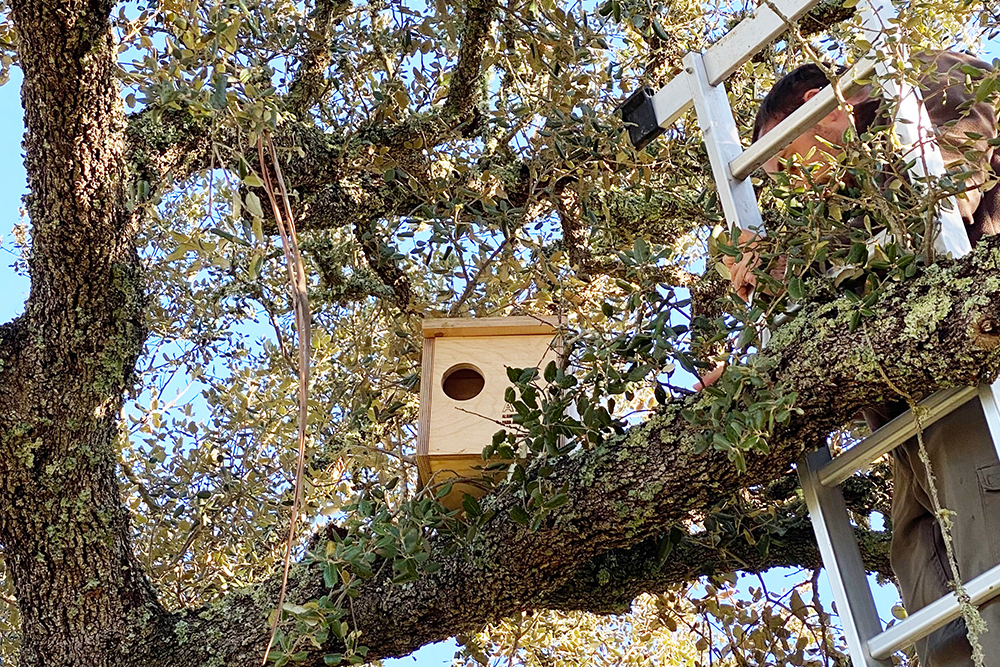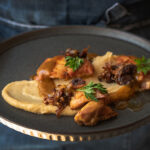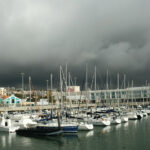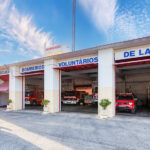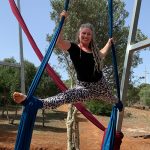WORDS Tracy Burton
Many people now visit the Algarve to enjoy the outdoor leisure opportunities it offers away from the beach. One activity which is becoming popular is birdwatching, not least because the region has such a rich diversity of species which are lured here by warm weather and abundance of food … just like we human visitors!
South African Cheryl Smith is relatively new to birdwatching. Soon after moving to Messines withher husbandGraham, she realised the Barragem do Funcho was a birdwatcher’s paradise.
“My interest in birds grew from the comfort of my outdoor lounge,” she says. “Watching the hoopoe, with its distinctive ‘crown’ of feathers, the azure-winged magpie flitting from tree to tree, and the heron wading at the water’s edge spurred me on to learn more about birds.”
Cheryl enlisted the help of local bird enthusiast Andrew Firebrace, who has lived in the area for nearly 20 years.
“There’s a big variety of birds here,” says Andrew, who walks every morning and sees between 15 and 25 bird species in one hour on average. “It’s not the same 25 every day,” he adds. “It depends on the weather but, in a month, you’d perhaps see between 40 and 50 different species.”

Since November 2020, Cheryl and Graham have been participating in the Vita Nativa’s ‘Local Accommodation for Birds’ project, which aims to encourage nesting bird sites in the Algarve.
Seven bird nesting boxes of various sizes were installed in carob and cork trees, with the aim of attracting species like tits, starlings, hoopoes and the little owl. Owls need bigger bird boxes because of their larger wingspan.
“Our owl nesting box was installed in a mature cork oak tree on a thick branch,” explains Cheryl. “This provides a safe environment for any chicks born inside to explore their surroundings before they can fly.”
So far, there have been no owl chicks; however, as Vita Nativa’s team discovered in March, some curious blue tits with their minds set on climbing the property ladder had checked into the spacious owl box.
“Graham joked that they had chosen a palace for their new home,” Cheryl says with a laugh.
Despite the lack of resident owls to date, the Vita Nativa team identified 41 different bird species at Figs on the Funcho in under two hours, while Andrew confirms there is definitely a little owl living in the vicinity. “I’ve seen it several times,” he says. “Little owls are the only owls you’ll see in the daytime and they are quite small.”
Andrew’s advice to enthusiastic amateurs – as he classes himself – is to get a bird book and take photographs. “Then you can check it when you get home. It’s much easier.”


Birdbox tips
If you’re thinking of installing a bird box, here are some tips:
- Make sure the box is above the ground and in a safe place
- Avoid locations with direct sunlight or prevailing winds
- Allow space between boxes as most birds are territorial
- Clean out all boxes before each breeding season begins
- Be patient – if you have no success after three years it might be worth choosing a different location
Some of the birds that have been heard and spotted on the Funcho:
- Goldfinch
- House martin
- Spotless starling
- European serin
- Nightingale
- Cetti’s warbler
- Scandinavian and Dartford warblers
- Iberian magpie
- Iberian green woodpecker
- European stonechat
- Blackbird
- Wren
- House sparrow
- Grey heron
- Little egret
- White stork
- Pied wagtail
- Grey wagtail
- Zitting cisticola
- Crested and Thekla’s larks
- Eurasian hoopoe
+351 912 595 539
For more about Vita Nativa, visit vitanativa.org
